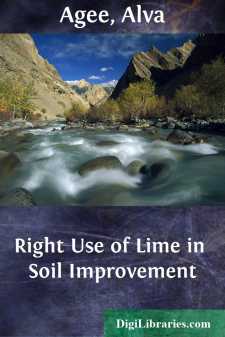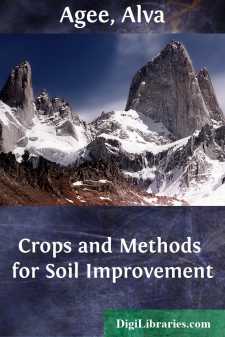Categories
- Antiques & Collectibles 13
- Architecture 36
- Art 48
- Bibles 22
- Biography & Autobiography 813
- Body, Mind & Spirit 142
- Business & Economics 28
- Children's Books 15
- Children's Fiction 12
- Computers 4
- Cooking 94
- Crafts & Hobbies 4
- Drama 346
- Education 46
- Family & Relationships 57
- Fiction 11829
- Games 19
- Gardening 17
- Health & Fitness 34
- History 1377
- House & Home 1
- Humor 147
- Juvenile Fiction 1873
- Juvenile Nonfiction 202
- Language Arts & Disciplines 88
- Law 16
- Literary Collections 686
- Literary Criticism 179
- Mathematics 13
- Medical 41
- Music 40
- Nature 179
- Non-Classifiable 1768
- Performing Arts 7
- Periodicals 1453
- Philosophy 64
- Photography 2
- Poetry 896
- Political Science 203
- Psychology 42
- Reference 154
- Religion 513
- Science 126
- Self-Help 84
- Social Science 81
- Sports & Recreation 34
- Study Aids 3
- Technology & Engineering 59
- Transportation 23
- Travel 463
- True Crime 29
Right Use of Lime in Soil Improvement
by: Alva Agee
Categories:
Description:
Excerpt
CHAPTER 1
INTRODUCTION
There is much in the action of lime in the soil that is not known, but all that we really need to know is simple and easily comprehended. The purpose of this little book is to set down the things that we need to know in order that we may make and keep our land friendly to plant life so far as lime is necessarily concerned with such an undertaking. Intelligent men like to reason matters out for themselves so far as practicable, taking the facts and testing them in their own thinking by some truth they have gained in their own experience and observation, and then their convictions stay by them and are acted upon. The whole story of the right use of lime on land is so simple and reasonable, when we stick only to the practical side, that we should easily escape the confusion of thought that seems to stand in the way of action. The experiment stations have been testing the value of lime applications to acid soils, and the government has been finding that the greater part of our farming lands is deficient in lime. Tens of thousands of farmers have confirmed the results of the stations that the application of lime is essential to profitable crop production on their farms. The confusion is due to some results of the misuse of lime before the needs of soils were understood, and to the variety of forms in which lime comes to us and the rather conflicting claims made for these various forms. It is unfortunate and unnecessary.
The soil is a great chemical laboratory, but exact knowledge of all its processes doubtless would enrich the farmer's vocabulary more than his pocketbook. We are concerned in knowing that lime's field of usefulness is broad in that it is an essential plant food and provides the active means of keeping the feeding ground of plants in sanitary condition. We want to know how it comes about that our soils are deficient in lime, and how we may determine the fact that they are deficient. We wish to know the relative values of the various forms of lime and how we may choose in the interest of our soil and our pocketbook. The time and method of application are important considerations to us. There are many details of knowledge, it is true, and yet all fit into a rational scheme that shows itself to be simple enough when the facts arrange themselves in an orderly way in our minds.
Lime cannot take the place of nitrogen, nor phosphorus, nor any other of the essential plant foods. It is not a substitute for any other essential factor in plant growth. It would be folly to try to depend upon lime as a sole source of soil fertility. On the other hand, we have learned very definitely within the last quarter of a century that it is foolish to depend upon commercial fertilizers and tillage and good seeds for full production of most crops from great areas of our farming country that have a marked lime deficiency. The obvious need of our soils is the rich organic matter that clover and grass sods could furnish, and their fundamental need is lime. Most farms cannot possibly make full returns to their owners until the land's hunger for lime has been met. The only question is that regarding the best way of meeting it.
Limestone Land. Soil analyses are serviceable only within certain limits, and in the case of the normal soils that comprise the very great part of the entire humid region of the United States the practical man gives little heed to what special analyses might show him when deciding upon the purchase of a farm. He does know, however, that a limestone soil has great natural strength, and recovers from mistreatment more readily than land low in lime. It has staying powers, and is dependable, unless through natural processes the lime leaches out or loses availability. All limestone areas have gained reputation for themselves as producers of grain and grass.
Other Calcareous Soils. It is not only the limestone areas that stand high in esteem. There are types of soil with every varying percentage of lime down to clear sand or to peat, and some of the types are finely calcareous, containing such a high percentage of lime that nothing more could be desired....



